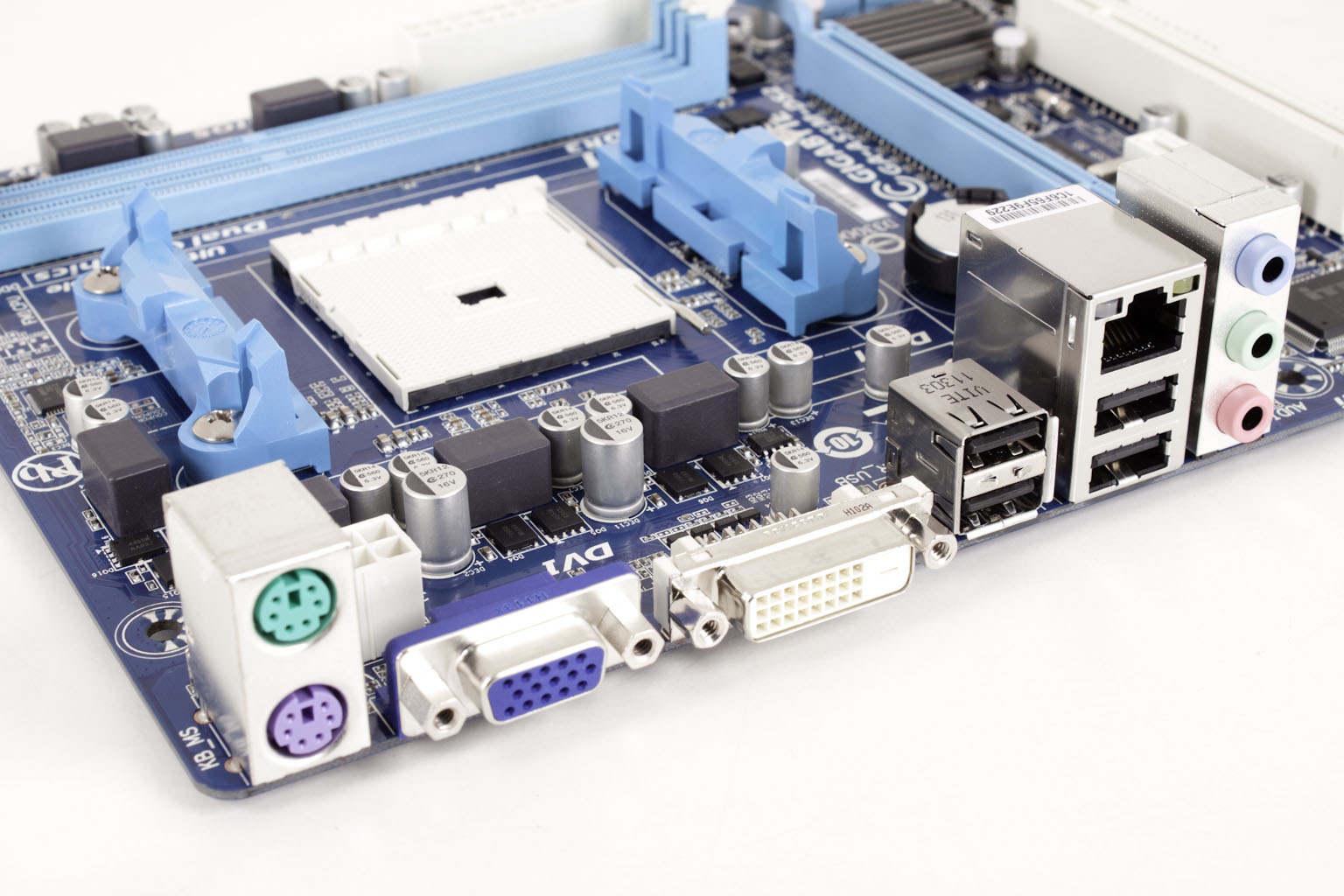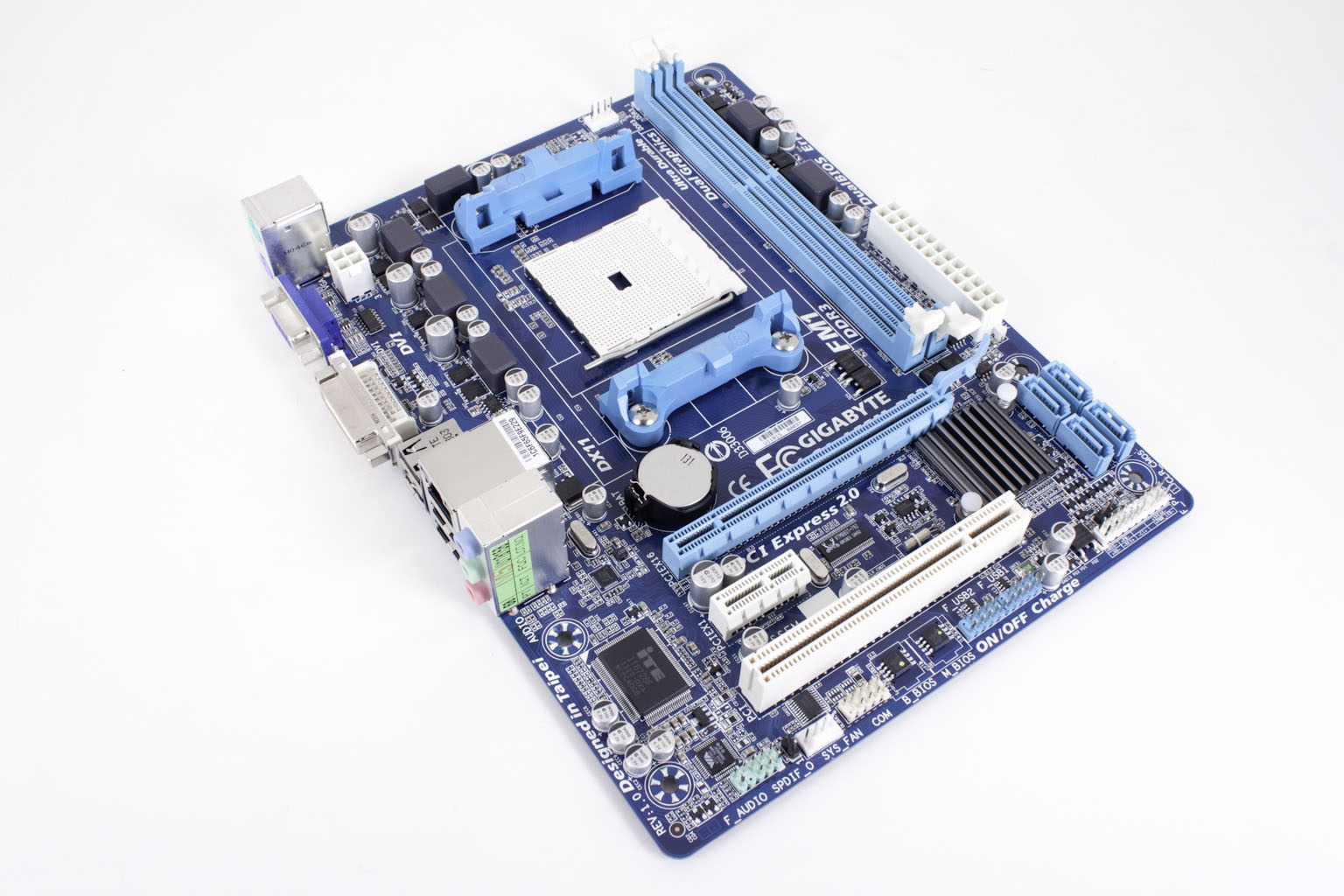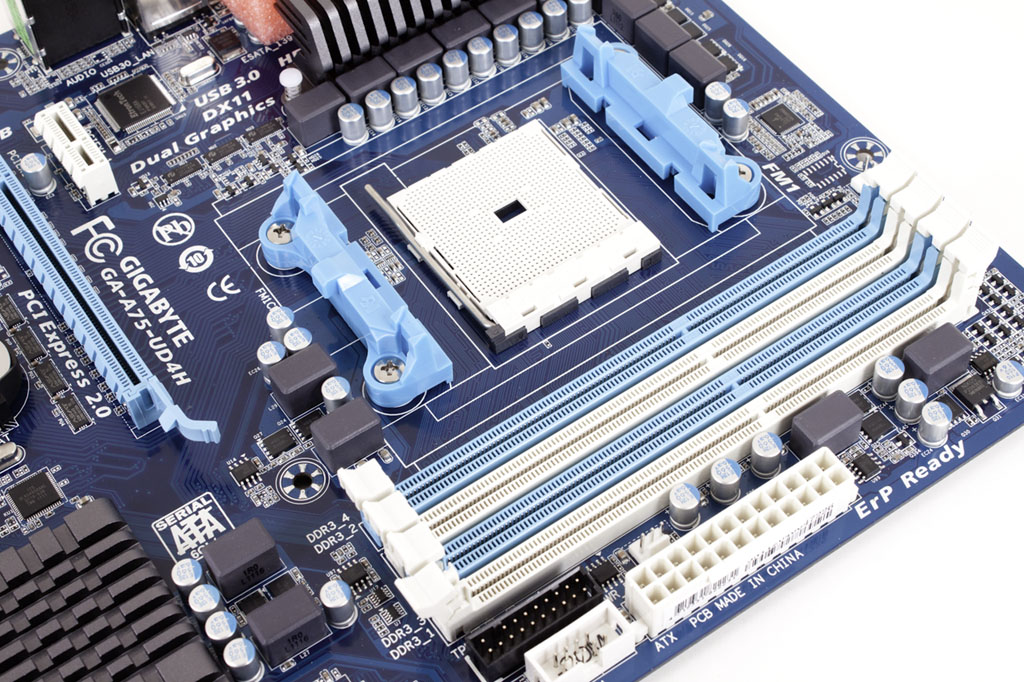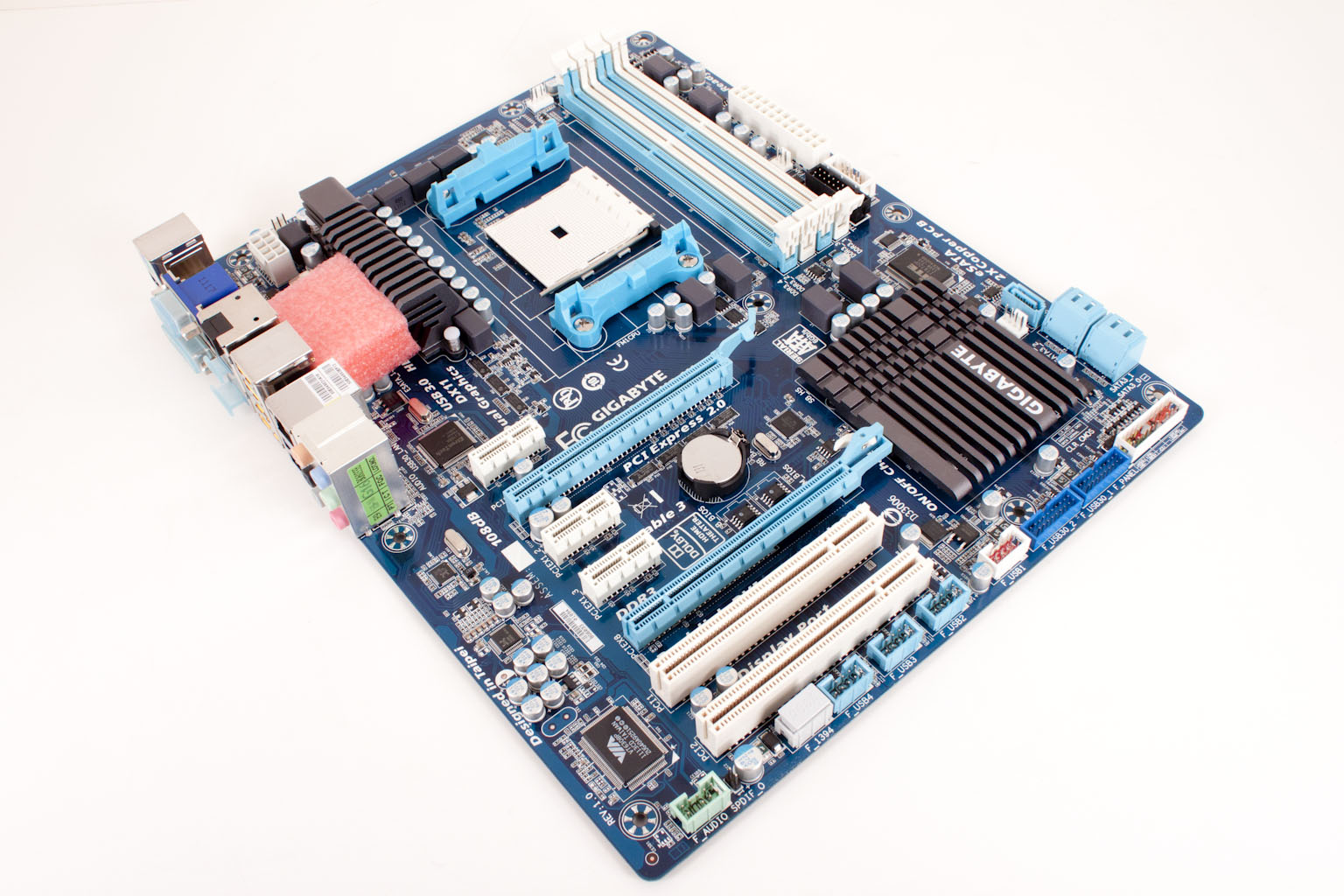Motherboards
 Although AMD’s future is far from certain we do know that they have been pushing towards lower power and lower cost devices. We have seen these in the form of their new APUs and their A75 and A55 chipsets. We have already tested the performance of the A75, now we are ready to take a look at the performance of one of the A55 based motherboards; the Gigabyte A55M-DS2. We have taken a look at the design choices and features so far and have come away with a bit of confusion as to where this product actually fits into the market. Now that we have put the board through our performance tests, let’s see if we can find out exactly where in the market the A66M-DS2 belong and if it is worth your time and money.
Although AMD’s future is far from certain we do know that they have been pushing towards lower power and lower cost devices. We have seen these in the form of their new APUs and their A75 and A55 chipsets. We have already tested the performance of the A75, now we are ready to take a look at the performance of one of the A55 based motherboards; the Gigabyte A55M-DS2. We have taken a look at the design choices and features so far and have come away with a bit of confusion as to where this product actually fits into the market. Now that we have put the board through our performance tests, let’s see if we can find out exactly where in the market the A66M-DS2 belong and if it is worth your time and money.
- Details
- By Sean Kalinich
- Hits: 35705
 AMD’s Llano is not a new product; it is one that has been out on the market for long enough that all of the major hype and press has already been written. We recently wrapped up our long term testing of an AMD A6-3650 combined with a Gigabyte A75 motherboard. We were rather impressed with the performance that we saw, even if the numbers did not match up to the overall feel. Now we are taking a look at the same CPU, but taking a step down the ladder to the A55 chipset. This time the victim is the A55M-DS2 motherboard. You are losing a few items with this shift like USB 3.0, SATA 3.0 and a PCIe slot, but we wonder if that will really impact performance. So let’s take a look at the design and the features that you can expect to get when you pick up one of these.
AMD’s Llano is not a new product; it is one that has been out on the market for long enough that all of the major hype and press has already been written. We recently wrapped up our long term testing of an AMD A6-3650 combined with a Gigabyte A75 motherboard. We were rather impressed with the performance that we saw, even if the numbers did not match up to the overall feel. Now we are taking a look at the same CPU, but taking a step down the ladder to the A55 chipset. This time the victim is the A55M-DS2 motherboard. You are losing a few items with this shift like USB 3.0, SATA 3.0 and a PCIe slot, but we wonder if that will really impact performance. So let’s take a look at the design and the features that you can expect to get when you pick up one of these.
- Details
- By Sean Kalinich
- Hits: 20514
 With all of the excitement surround a CPU launch from both AMD and then Intel some of the smaller products have been overlooked. These are parts like the A75 chipset and the Llano CPU. We have had one of these up on the test bench for a while now. Mostly to run the performance tests and see where this hardware falls in terms of real performance, but also to try it out and see just what it is like to use. After all this is a platform that AMD was putting a good deal of stock in for future sales and market share. We wanted to see what it would be like to actually use one. We have already taken a look at the design philosophy and features So without any further preamble we bring you the second half of our Gigabyte A75-UD4H motherboard review.
With all of the excitement surround a CPU launch from both AMD and then Intel some of the smaller products have been overlooked. These are parts like the A75 chipset and the Llano CPU. We have had one of these up on the test bench for a while now. Mostly to run the performance tests and see where this hardware falls in terms of real performance, but also to try it out and see just what it is like to use. After all this is a platform that AMD was putting a good deal of stock in for future sales and market share. We wanted to see what it would be like to actually use one. We have already taken a look at the design philosophy and features So without any further preamble we bring you the second half of our Gigabyte A75-UD4H motherboard review.
- Details
- By Sean Kalinich
- Hits: 22381
 AMD has been throwing the term Fusion around since the early days of the AM2 CPU. We heard rumors of AMD “fusing” the GPU and the CPU together, integrating the MCP (media control processor) into the CPU and a bunch of other stuff. Each of these rumors was dismissed by AMD one at a time. AMD continued to state that Fusion was not a single thing but a platform (of course the media was not going to let that happen). It was only last year when we finally found out what AMD was talking about. It was a CPU with and APU (auxiliary processing unit) that is there to assist in complex tasks that the core CPU was not able to deal with. Interestingly enough this was not a new idea but was actually a return to some of AMD’s roots. AMD began their CPU debut with the purchase of a company called Nexgen. Nexgen CPU did not include a math co-processor (at least the original ones). If you wanted one you could buy one and attach it as an… you guessed it APU. Well many years have passed since that time and we are sure the APU is a little more than a simple math co-processor. Fortunately for you, we have an AMD A6 3650 and a Gigabyte A75-UD4H motherboard to play with. So let’s take a look at this new motherboard from Gigabyte and while we are at it the AMD Llano A6 3650 CPU…
AMD has been throwing the term Fusion around since the early days of the AM2 CPU. We heard rumors of AMD “fusing” the GPU and the CPU together, integrating the MCP (media control processor) into the CPU and a bunch of other stuff. Each of these rumors was dismissed by AMD one at a time. AMD continued to state that Fusion was not a single thing but a platform (of course the media was not going to let that happen). It was only last year when we finally found out what AMD was talking about. It was a CPU with and APU (auxiliary processing unit) that is there to assist in complex tasks that the core CPU was not able to deal with. Interestingly enough this was not a new idea but was actually a return to some of AMD’s roots. AMD began their CPU debut with the purchase of a company called Nexgen. Nexgen CPU did not include a math co-processor (at least the original ones). If you wanted one you could buy one and attach it as an… you guessed it APU. Well many years have passed since that time and we are sure the APU is a little more than a simple math co-processor. Fortunately for you, we have an AMD A6 3650 and a Gigabyte A75-UD4H motherboard to play with. So let’s take a look at this new motherboard from Gigabyte and while we are at it the AMD Llano A6 3650 CPU…
- Details
- By Sean Kalinich
- Hits: 17905
 After a look into the design and features of the Gigabyte Z68X-UD3H we are now diving into how well it performs. Unlike the MSI Z68A-GD80 we do not have any indications that we will run out of PCIe lanes, however we are still a little concerned about how well the Z68X will perform when we drop in the HD5870. We are also more than a little curious to see how the touchBIOS will work on the real world. So, let’s dive in and get to testing the Gigabyte Z68X-UD3H.
After a look into the design and features of the Gigabyte Z68X-UD3H we are now diving into how well it performs. Unlike the MSI Z68A-GD80 we do not have any indications that we will run out of PCIe lanes, however we are still a little concerned about how well the Z68X will perform when we drop in the HD5870. We are also more than a little curious to see how the touchBIOS will work on the real world. So, let’s dive in and get to testing the Gigabyte Z68X-UD3H.
- Details
- By Sean Kalinich
- Hits: 29889
Read more: We Put the Gigabyte Z68X-UD3H B3 Through its Paces
More Articles …
Page 3 of 4



